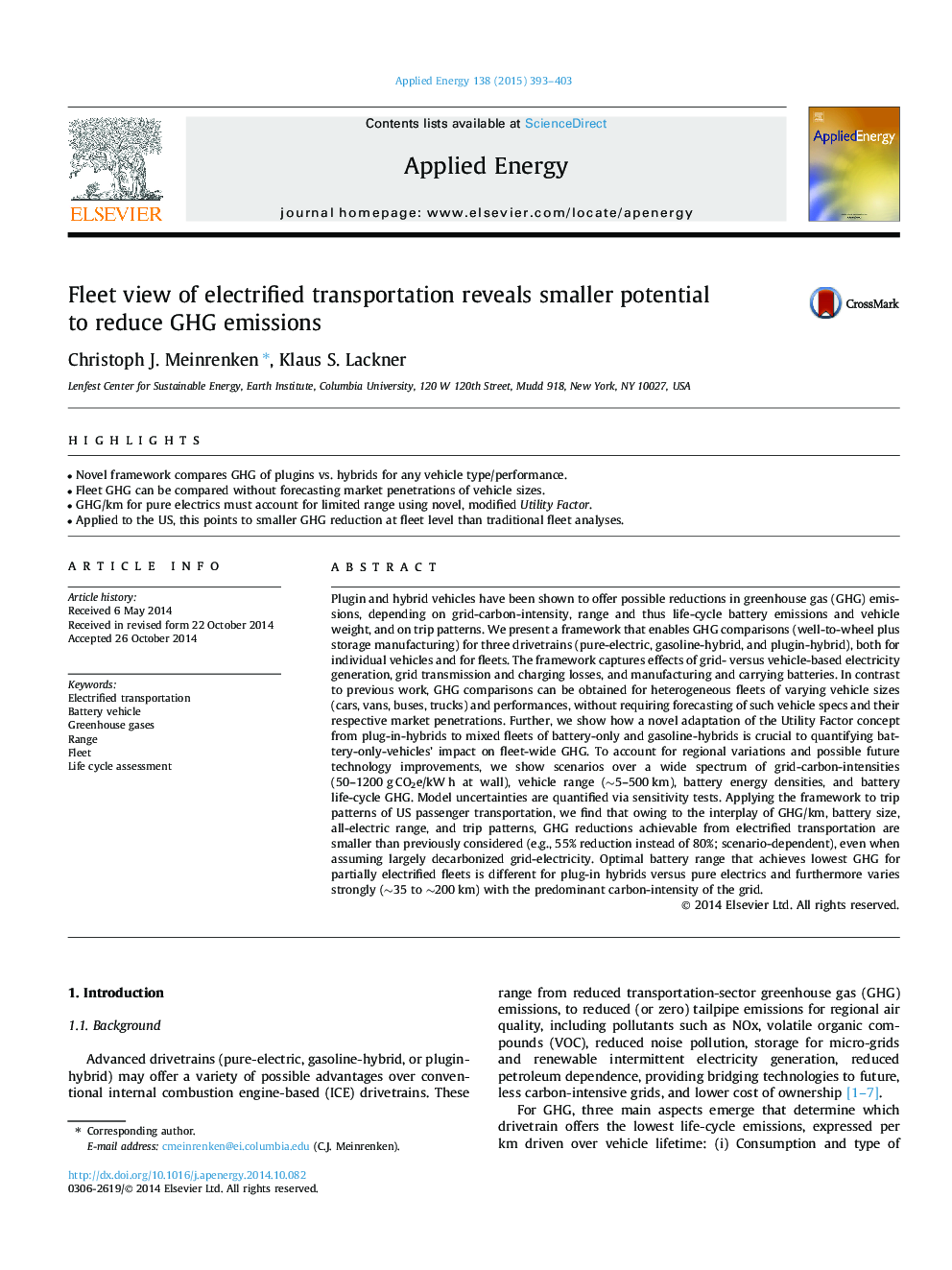| کد مقاله | کد نشریه | سال انتشار | مقاله انگلیسی | نسخه تمام متن |
|---|---|---|---|---|
| 6688295 | 501886 | 2015 | 11 صفحه PDF | دانلود رایگان |
عنوان انگلیسی مقاله ISI
Fleet view of electrified transportation reveals smaller potential to reduce GHG emissions
ترجمه فارسی عنوان
دیدگاه ناوگان حمل و نقل الکتریکی نشان می دهد پتانسیل کوچکتر برای کاهش انتشار گازهای گلخانه ای
دانلود مقاله + سفارش ترجمه
دانلود مقاله ISI انگلیسی
رایگان برای ایرانیان
کلمات کلیدی
حمل و نقل الکتریکی، وسیله نقلیه باتری، گازهای گلخانه ای، دامنه، ناوگان، ارزیابی چرخه حیات،
موضوعات مرتبط
مهندسی و علوم پایه
مهندسی انرژی
مهندسی انرژی و فناوری های برق
چکیده انگلیسی
Plugin and hybrid vehicles have been shown to offer possible reductions in greenhouse gas (GHG) emissions, depending on grid-carbon-intensity, range and thus life-cycle battery emissions and vehicle weight, and on trip patterns. We present a framework that enables GHG comparisons (well-to-wheel plus storage manufacturing) for three drivetrains (pure-electric, gasoline-hybrid, and plugin-hybrid), both for individual vehicles and for fleets. The framework captures effects of grid- versus vehicle-based electricity generation, grid transmission and charging losses, and manufacturing and carrying batteries. In contrast to previous work, GHG comparisons can be obtained for heterogeneous fleets of varying vehicle sizes (cars, vans, buses, trucks) and performances, without requiring forecasting of such vehicle specs and their respective market penetrations. Further, we show how a novel adaptation of the Utility Factor concept from plug-in-hybrids to mixed fleets of battery-only and gasoline-hybrids is crucial to quantifying battery-only-vehicles' impact on fleet-wide GHG. To account for regional variations and possible future technology improvements, we show scenarios over a wide spectrum of grid-carbon-intensities (50-1200 g CO2e/kW h at wall), vehicle range (â¼5-500 km), battery energy densities, and battery life-cycle GHG. Model uncertainties are quantified via sensitivity tests. Applying the framework to trip patterns of US passenger transportation, we find that owing to the interplay of GHG/km, battery size, all-electric range, and trip patterns, GHG reductions achievable from electrified transportation are smaller than previously considered (e.g., 55% reduction instead of 80%; scenario-dependent), even when assuming largely decarbonized grid-electricity. Optimal battery range that achieves lowest GHG for partially electrified fleets is different for plug-in hybrids versus pure electrics and furthermore varies strongly (â¼35 to â¼200 km) with the predominant carbon-intensity of the grid.
ناشر
Database: Elsevier - ScienceDirect (ساینس دایرکت)
Journal: Applied Energy - Volume 138, 15 January 2015, Pages 393-403
Journal: Applied Energy - Volume 138, 15 January 2015, Pages 393-403
نویسندگان
Christoph J. Meinrenken, Klaus S. Lackner,
